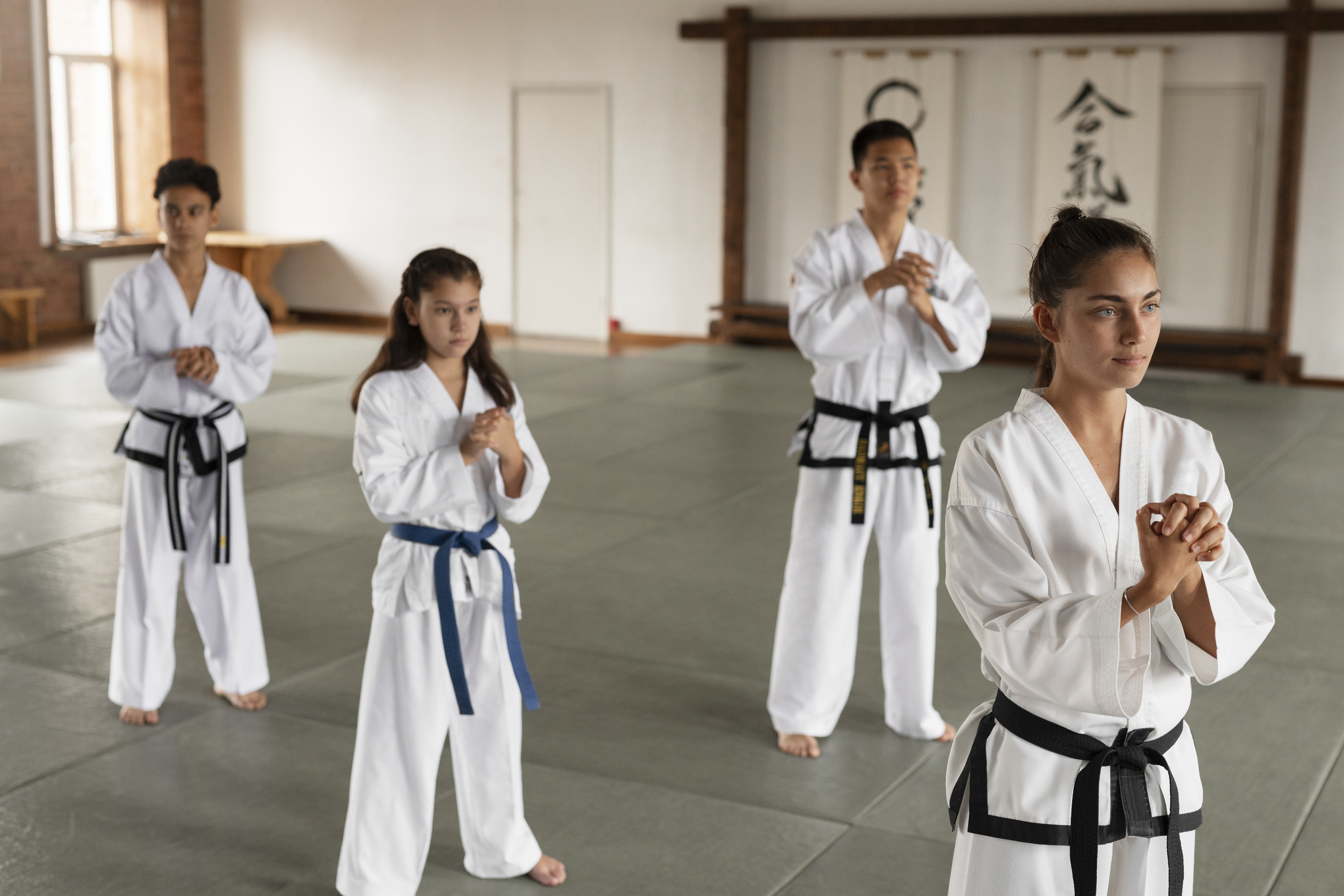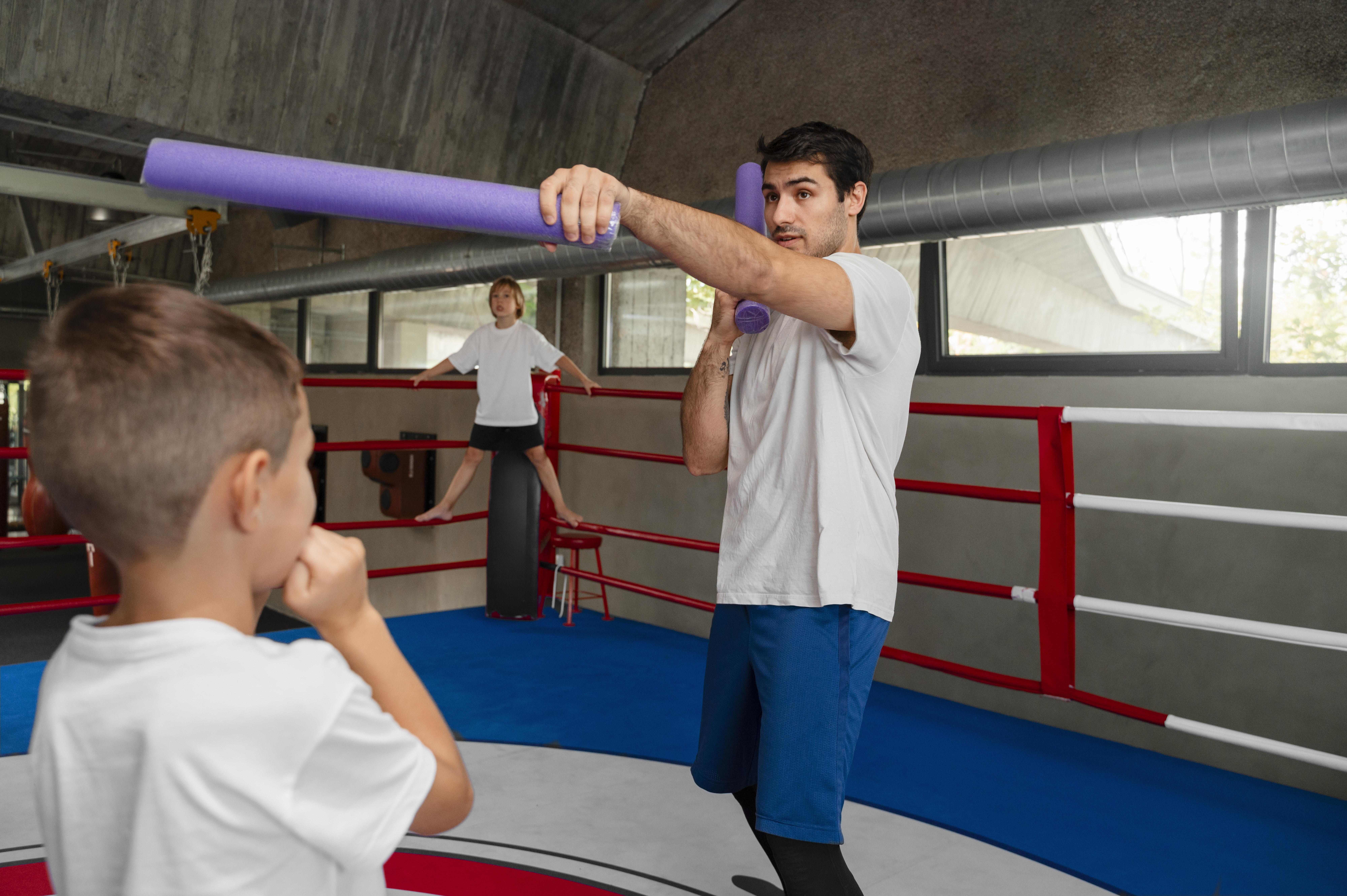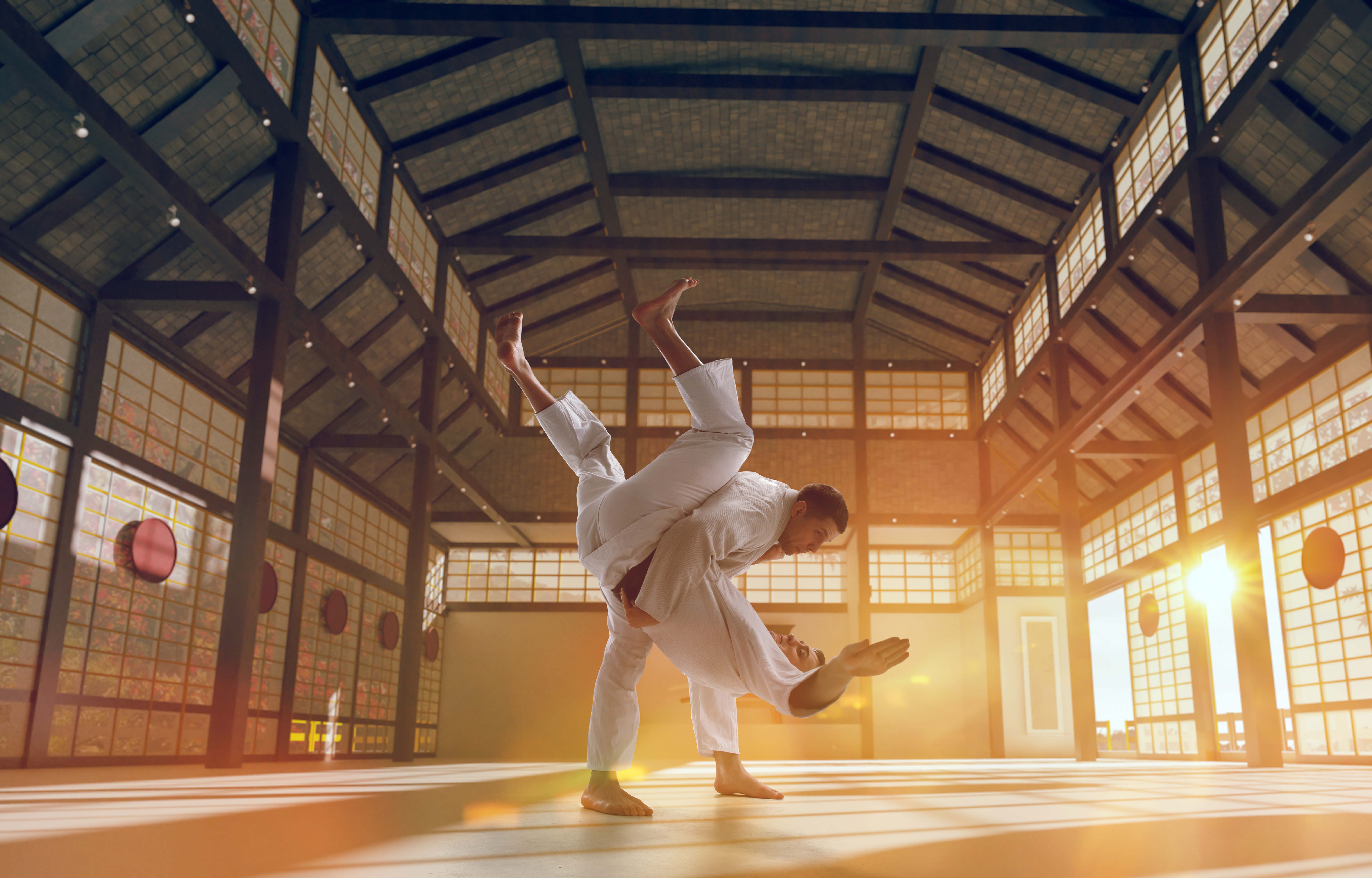Streamlining Martial Arts School Operations to Focus More on Students

As a martial arts academy owner, you dream of teaching students about the fundamentals. But we know having a martial arts school is not solely based on teaching strikes and grapples. Having good knowledge of administrative work is also a key aspect of a thriving martial arts academy.
Just keeping the academy well-maintained requires hard work. Sometimes, your administrative responsibilities can hinder member experiences. If you act as both owner and instructor, you know it is extremely difficult to balance the two.
Streamlining martial arts school operations can be challenging, but it doesn’t have to be! There are solutions that free up your time and allow you to focus more on teaching martial arts.
Four Time-Consuming Tasks to Improve in Your School
To streamline the operations of your martial arts academy, you should first know the most time-consuming tasks that your school could have. Of course, this varies per martial arts academy, but in general, many owners find these tasks daunting, especially if they must be completed manually.
1. Scheduling and Class Management
Most academies have a fixed class schedule that might suggest the scheduling process would be simple. But it’s often difficult to set the right schedule in the first place. Most established martial arts academies have a standard class schedule that fits the availability of its instructors and students. One-on-one session requests can also present challenges if instructors are unavailable.
2. Billing and Payments
While we know you would rather focus on sharing your passion for traditional martial arts, you should also devote time to managing your finances if you want to keep training the next generation of martial artists in your community. Billing is a complicated aspect of managing your martial arts academy. Each month, you keep track of students’ payments, including sending reminders until payments are made. This process is not only tedious, but it can also be annoying for all involved.
3. Analyzing Data
If you want to take your martial arts academy to the next level, analyzing information can help. It can be tricky to know which data to collect in the first place. If you do things manually in your martial arts academy, you will have to collect data for attendance, revenue, conversions, engagements, and other aspects, which can be an extremely grueling process. Then you need to aggregate the data points after collection, using separate apps or software to graph and make sense of the data. After that comes the analyzation process that helps you decide the next steps for your academy.
4. Maximizing Efficiency and Organization
Having an effective organizational structure is also an integral aspect of maintaining a martial arts academy, but that can be a time-consuming process as well. These days, most organizations use different programs to streamline their operations.
As a martial arts academy owner, these are some of the questions that can cross your mind:
- What programs should you use?
- Are there programs that can help teachers?
- What is the best martial arts software on the market?
The good news is, once an operation system is made for your martial arts academy, you’re set.
Optimizing Class Schedules
Class management can be complicated. As mentioned earlier, instructor availability and right class schedules can make or break your academy. But better class management is entirely within reach.
Establish a Clear Class Structure
Before anything else, establish a class structure that both teachers and students can follow easily. Try to be flexible enough to make your classes available to anyone — even walk-ins who are testing the waters — but also be clear about your focus during that day.
Each of your classes should cater to different skill levels and demographics while also being open to as many students as possible. For instance, have a class for beginners, the fundamentals, open mats, drills, and one dedicated to kids throughout the week. Belt testing should also come in advance. Clearly communicate the dates, times, and requirements to students and parents to avoid confusion and facilitate smooth operations.
Your schedule can change depending on demand and feedback, but it is good to have a templated, baseline schedule that can accommodate all walks of life.
Online Class Registration
Once you have established a class schedule for your academy, you should invest in software that allows students to register online. This eliminates the need for manual paperwork and allows individuals to sign up for classes conveniently from anywhere, anytime. If you already have a website, embed your schedule there so potential students can see when classes are offered.
Also utilize attendance tracking systems, such as barcode scanners or digital check-ins, to efficiently monitor student attendance. This provides accurate data for analysis that helps identify attendance patterns.
Regularly Communicate Schedule and Attendance
Regular communication cadences are a smart way to build trust and community at your school. Sometimes, the schedule at your martial arts academy could change, especially during holidays. In those instances, promptly communicate any changes or cancellations to students and parents using multiple channels such as email, SMS, or a dedicated communication platform. This helps avoid confusion and inconvenience for your parents and students.
If one of your students misses multiple classes in a row, send them a friendly reminder to return or offer them an opportunity for make-up classes. That nudge will remind them that their presence is important. Automated emails are an excellent solution for these types of reminders. With automated emails, you can craft applicable templates and automatically send them to your students when the need arises.
Simplify Billing and Payment Processes
When it comes to billing and payments, you want to make the process as simple and convenient as possible.
Provide Clear and Transparent Fee Structures
To avoid confusion and disputes, make prospective students aware of your fee structure upfront, including tuition fees, equipment costs, testing fees, and any additional charges.
Tips to make your fee structures upfront and clear
- Clearly communicate fees with walk-ins before they take their first class
- Clearly display fees and payment schemes on your website and marketing materials
- Post (and pin) information about your fee structure on social media accounts like Facebook
- Create collateral materials explaining your fee and payment structure for email distribution
Offer Multiple Payment Options
Accepting cash, checks, and online payments allows you to cater to a wider range of students and their families, making it more convenient for them to join your programs.
Tips to make payments easier for students:
- Display accepted payment methods prominently at your studio, on your website, and during the registration process
- Always accept cash as walk-ins are more likely to make one-time payments for classes when they are just starting out
- Display QR codes for different online payment channels near your front desk
- Offer online payment options such as credit card, electronic fund transfers, or digital wallet services
- Partner with a reliable and secure payment solution that integrates seamlessly with your martial arts management software or website
Set Automated Payments
The ideal way to optimize billing in your martial arts academy is through automated monthly payments. Automated payments reduce the need for manual invoicing and follow-up, which saves you time and ensures a more consistent revenue flow.
There are several different solutions that can set automated payments for your martial arts academy. Be sure to select one that’s trusted, secure, and easy to integrate with your academy’s existing management software or website.
Use Data Analytics
Data and analytics play a crucial role in understanding member engagement and retention in a martial arts studio. Using data can be quite intimidating, but there are approachable ways to analyze data to improve your martial arts academy.
Think of data analysis as your key to better member retention. By analyzing the functionality of your school, you can streamline your operations and tailor them to meet the needs and preferences of your students.
Collect Member Data
Before data can be analyzed, it must first be collected. Key data such as demographics, training history, belt progression, class preferences, and engagement patterns can tell you a lot about how your martial arts academy is doing.
Before you collect this data, invest in traditional martial arts software that can keep track of your members’ information without the need for manual input. Manually collecting data like members’ attendance, payments, and feedback can be time-consuming, and there is also a greater chance of error.
Traditional martial arts software not only makes your job easier, but it also helps to ensure the data you collect is correct.
Analyze Data
Once you have collected the data you need, it’s time to analyze it. And the easiest way to approach this analysis is to put your data into a graph or chart. For example, have one graph or chart focused on the key performance indicators (KPIs) for your martial arts academy.
Tips for useful KPIs:
- Attendance rates
- Revenue
- Membership renewals
- Member satisfaction
- Churn rate
Revisit your graphed KPIs on a regular cadence (weekly or monthly) to keep a finger on the pulse of your academy
Pivot when Necessary
After you’ve had a little time to monitor the effectiveness of your member engagement and retention initiatives, be prepared to act. Identify areas that need improvement and make data-driven adjustments. Set benchmarks and track your progress over time to assess the impact of your efforts.
Upgrade Skills and Belt Tracking
Unlike the other three processes, skills and belt tracking is probably the closest to your heart as a martial artist. Although each traditional martial art has a different belt system, there may still be room for an upgrade to your method of tracking.
Indicate Belt Requirements
You’re probably accustomed to students asking how long it will take to progress from one belt to another. Give them a timeframe for the average student and be sure to clearly outline the skills, techniques, forms, and knowledge expected at each belt level. This provides students with a roadmap for their progression and helps instructors track their development more effectively.
Before belt tests, define its criteria to ensure consistency in the evaluation. Provide students with clear guidelines and expectations prior to the test, including the proper techniques, form, and knowledge needed to master each aspect.
Document Progress and Feedback
Progress documentation is an important aspect of your academy’s belt tracking system. Visibility into their progress can spur motivation, which also leads to member retention. Maintain detailed records for each student, including their belt level, skills achieved, and areas for improvement. This allows teachers to give personalized feedback, provide constructive comments on strengths, areas for improvement, and specific techniques or forms that require attention. Documented feedback allows students to review and reflect on their progress while providing a reference for future training.
Recognize Progress and Achievements
Most teachers present new belts in front of the whole class during belt graduation ceremonies. Other martial arts schools celebrate a student’s belt progression by having the student walk in a straight line while their teammates hit their back softly with their belts.
While these methods are wonderful, we suggest adding progress certificates sent by email. These types of public acknowledgements encourage continued dedication while simultaneously motivating the students to learn from each other and strive for collective success.
Maximize Efficiency and Organization
Use technology to maximize your efficiency by automating and simplifying daily activities. [Heading 3] Select a Solution
When choosing software for your martial arts academy, prioritize applications with the best bang for your buck. Free apps probably won’t be advanced enough to benefit your operations and… You get what you pay for.
Tips for considering traditional martial arts software:
- User-Friendly Interface. The software should have an intuitive, user-friendly interface that is easy to navigate
- Customizability. Look for platforms that allow you to customize and tailor the software to match the needs of your martial arts academy
- Comprehensive Features. The software should offer a comprehensive set of features that cover the essential aspects of running a martial arts academy
- Integration Capabilities. Consider platforms that can integrate with your existing software or tools you already use, such as payment gateways, website builders, or email marketing platforms to streamline processes and avoid duplicate data entry
- Automated Functions. Look for software that automates repetitive administrative tasks, such as attendance tracking, billing, and communication
- Reporting and Analytics. The software should provide robust reporting and analytics features to help you gain insight into your academy’s overall performance, including student progress, financials, and other key metrics
Purchasing software with this functionality will allow you to complete most administrative tasks in an instant, freeing up your time to focus on your students. The goal should be to find an integrated traditional martial arts solution with the power to complete multiple tasks.
Implement Strategically
Before introducing your new software, familiarize yourself with it first. Credible martial arts software will come with manuals, instructional materials, and even offer a free product demo before your purchase.
Once you are comfortable with the martial arts software, schedule group training sessions where the software can be introduced to your employees. During these sessions, provide an overview of the software, demonstrate its key features, and explain how it can streamline their work processes. Consider conducting role-specific training sessions tailored to the different functions within your martial arts academy. For example, instructors may need training on how to manage class schedules, record attendance, or track student progress, while administrative staff members may require training on billing and payment processing.
About Zen Planner
Zen Planner is a martial arts software that was founded by a martial arts enthusiast who was also having a hard time managing their school. As software custom-made to fit martial arts academies, Zen Planner makes it easy to bill, schedule, track belt and skill levels and attendance, as well as manage your students, staff, and much more.
Key Differentiators
Unlike other traditional martial arts software, Zen Planner can maximize efficiency in your academy by consolidating your technological needs. It’s all-in-one. All you need is Zen Planner.
Feature highlights:
- Reporting dashboard
- Simplified billing
- Integrated payment processing
- Class and program scheduling
- Marketing automations
- Skill and attendance tracking
- Advanced workout tracking
- Retail store
- Member self-service
- Member and staff apps
With its user-friendly interface and customizable dashboards, Zen Planner can help streamline class management by giving you an embeddable calendar and comprehensive attendance tracker to manage students.
When it comes to billing and payments, you don’t have to message students with notifications about late payments. Activate automated email reminders or set up an automated payment system to charge students monthly.
With the automation of attendance, emails, and payments, Zen Planner supplies accurate data that you easily pull-up in your color-coded dashboard graphs and charts.
You can also record skill tests, belt progress, and even uniform sizes on the same software.
Managing a martial arts academy involves more than just teaching—it requires efficient administrative and operational strategies. By leveraging Zen Planner Engagement, you can streamline your operations, optimize financial management, enhance member engagement, and boost your academy’s online reputation. Embrace these tools to free up more time for what you love most: teaching martial arts and growing your academy.

I’m Coach Kelli, a devoted CrossFit gym owner with 15 years of experience managing my facility, along with owning yoga studios and wellness centers. Beyond the fitness world, I have a passion for cooking, cherish moments with my children and family, and find joy in spending time outside. Having experienced the highs and lows, I’m dedicated to leveraging my expertise to help you grow and succeed on your fitness journey.

I’m Coach Kelli, a devoted CrossFit gym owner with 15 years of experience managing my facility, along with owning yoga studios and wellness centers. Beyond the fitness world, I have a passion for cooking, cherish moments with my children and family, and find joy in spending time outside. Having experienced the highs and lows, I’m dedicated to leveraging my expertise to help you grow and succeed on your fitness journey.







